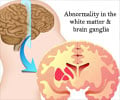
‘Inducing seizures is as effective for determining the origin of seizures in the brain as spontaneous seizures. ’
Tweet it Now
Epilepsy patients awaiting surgery often stay in hospital for one to two weeks under medical observation for the recording of seizures. By recording the source of the seizure, doctors can know what part of the brain to operate on to stop future seizures. This stay can be extremely inconvenient for patients and expensive for health care systems. In approximately 20 per cent of patients, electrodes have to be inserted directly into the brain. Patients with inserted electrodes often undergo cortical stimulation, a procedure that applies electrical current to the brain to map brain function but also to induce seizures for better understanding of the epileptic network. So far, no study systematically addressed whether relying on induced seizures to plan the surgery is as effective as relying on spontaneous seizures.
Looking at data from 103 epilepsy patients in Montreal, Canada and Grenoble, France, a research team led by Dr. Birgit Frauscher at The Neuro (Montreal Neurological Institute and Hospital) used statistical methods to reveal correlations between the presence of stimulated seizures and their onset zone and patient outcome. They found the patients who had induced seizures had better outcomes than patients in whom no seizures could be induced. Also, there was strong similarity between the seizure onset zones identified by induced and spontaneous seizures.
Using induced seizures in this way could mean much shorter hospital stays for patients awaiting surgery, and cost savings for hospitals that perform these operations.
Dr. Frauscher says her clinic has changed its standard practice, performing stimulation early after electrode insertion, and expects other clinics will follow as a result of this study.
Advertisement
Source-Eurekalert














